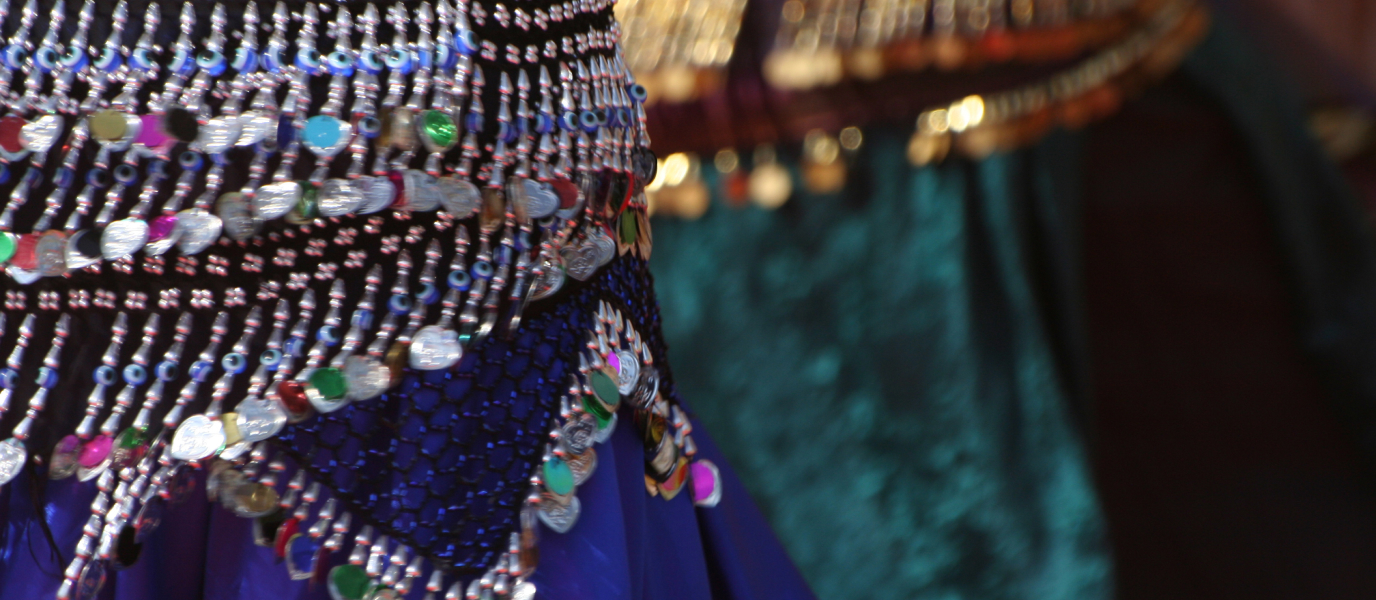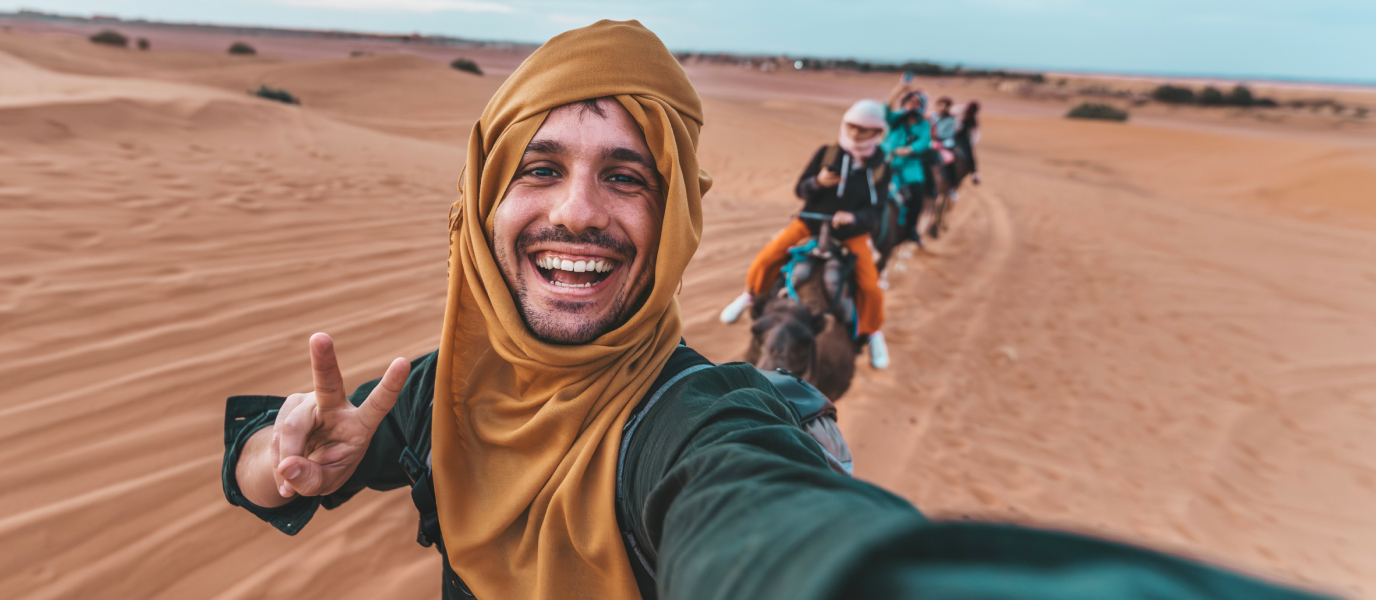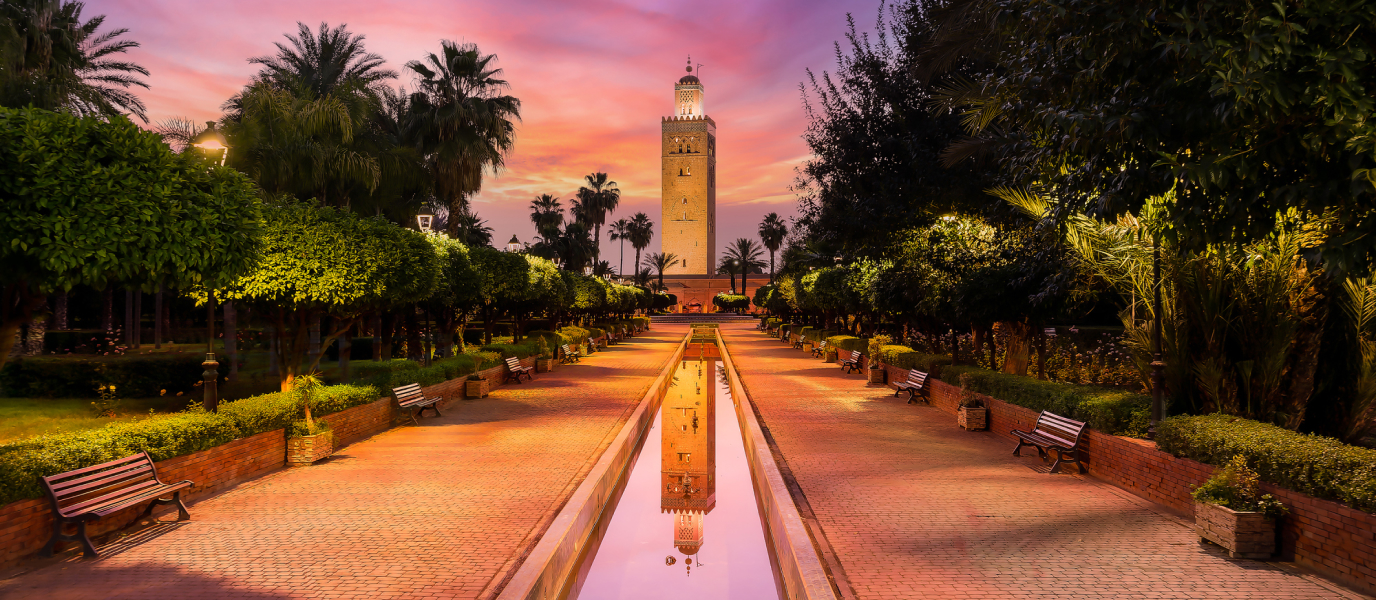In Marrakesh, shikhat, as belly dancing is known in the region, is a spectacle that attracts visitors from all over the world. The brightly coloured costumes of the professional dancers and the sensuality of their pelvic movements cast a special spell on those watching. The dance is hypnotic to watch. It’s accompanied by percussion music that switches between faster rhythmic sections and slower ones.
In the Moroccan capital, there are many shows on offer in venues that promise the best performances. It’s a good way to enjoy this unique art form. But the way Moroccans experience it and integrate it into their daily lives mean that the most authentic experiences can be found at a local party or a wedding. At these ceremonies, the guests dance in traditional kaftans.
History and origins of a seductive dance
Belly dancing is popular in various countries in the Middle East and North Africa. There are many variations of this type of dance based on seductive belly and hip movements. It’s a fusion of different styles of ethnic folk dances.
Images of similar choreography have been found in Pharaonic tombs in ancient Egypt and on wall paintings in the Neolithic settlement of Çatalhöyük in Turkey. Its origins aren’t entirely clear, but what’s certain is that this type of dance is related to the theme of fertility, the earth, and the magical powers attributed to women for their ability to give birth to new life.
The name belly dance came into use in the 19th century. It was the name given to it by European travellers. The exoticism of the dance, so different from Western forms, impressed them from the outset and helped spread its popularity far beyond its natural borders. It was previously known as Oriental Dance. In Arab countries, the most basic form of the dance, involving simple hip movements, coexists with more sophisticated ones, where all parts of the body take centre stage.
The erotic and mystical components of belly dancing are plain to see. This ancient artistic speciality is increasingly practised in the West, although it isn’t looked upon favourably by Muslim fundamentalists. In countries where Islamic fundamentalism is most prevalent, belly dancing is banned in public places and is practised secretly at certain venues. But this isn’t the case in Morocco, where it’s totally permitted, is widely accepted, and is a popular tourist attraction.
Special features of belly dancing in Morocco
Shikhat has always been linked to the celebration of life through the womb as the fertilising centre. The Moroccan version of belly dancing is characterised by sensual movements of the hips, pelvis, arms, and hands. Professional dancers wear brightly coloured costumes with sequinned tops and long skirts or loose trousers. They also wear exotic jewellery, including belts made of coins which, in the past, represented the wealth of the entire family. Other props used during belly dancing in Morocco include swords, snakes, large glassware, and even huge candelabra with lit candles.
A thin cloth is often worn on the hips to draw attention to the movements of the lower body. The faster movements, in rhythm with the percussion, alternate with softer, undulating movements. Very old instruments called crotales are used, which are made of brass and also known as zills. The dance is usually performed barefoot, a way of emphasising the physical connection between the dancers and Mother Earth.
The choreography changes slightly whether it takes place at a party or a traditional Moroccan wedding. At a wedding celebration, the guests wear kaftans, typical long, loose-fitting dresses with bell-shaped sleeves and beautiful embroidery. The custom at these gatherings is for one woman to dance in the centre of a circle, surrounded by the other women, who clap their hands in time to the music. The men present kneel in a circle and encourage the woman to continue her solitary, intoxicating dance.
Where to see belly dancing shows in Marrakesh
In Marrakesh you can enjoy belly dancing shows at many regional and cultural festivals, but the most typical thing to do when you travel to the city is to go to restaurants and private clubs that specialise in belly dancing. In the ancient imperial city, this seductive dance was mainly used to please the sultans and entertain at weddings. Today it’s valued as an artistic expression and dancers demonstrate their skills, style, and mastery at many festivals throughout the country. Demonstrations are also very common in private performances for groups.
Belly dancing harks back to the legends of One Thousand and One Nights, but it has also become a fashionable dance that women from other parts of the world want to learn. In the more modern and cosmopolitan Marrakesh, there are clubs and restaurants where belly dancing is a major attraction for visitors.
Restaurants where you can dine and enjoy belly dancing
The Hivernage district, where many hotels are located, is an area to visit for a good performance. If you’re looking for an exquisite dinner, make a note of the address of Le Comptoir Darna restaurant on Echouhada Avenue. This is a very chic and fashionable place on the capital’s nightlife circuit. Its modern décor, good value for money, and the intensity of the show are outstanding.
Other options include Le Marrakchi and Dar Nejjarine, both around the famous Jemaa El Fna Square. The former is a restaurant overlooking this setting in the heart of Marrakesh. Dishes are prepared using traditional recipes and there’s a belly dancing show every night. The latter is the former residence of a governor and now an elegant riad. Food, music, and dance delight visitors in this setting.
Nearby, in the Place des Ferblantiers, is Le Tanija. Here, with panoramic views of the spectacular Koutoubia Mosque and the rooftops of the Red City, you can enjoy a traditional Moroccan dinner, accompanied by music and belly dancing.
A film set in the heart of the medina
The Dar Essalam restaurant is famous thanks to the influence of cinema. A scene from Alfred Hitchcock‘s film The Man Who Knew Too Much was filmed here. Although the establishment has several rooms, the most famous among visitors is the K’Dim Room, where Doris Day and James Stewart sat for some of the film shots. This is the oldest and most refined room in the establishment and has a traditional Moroccan style.
In addition to Hitchcock, other personalities such as the politician Winston Churchill and the French musician Charles Trenet were customers of this restaurant located in a luxurious palace in the medina (170 Riad Zitoun Kedim). Here you can enjoy a typical Moroccan meal. It’s complemented by various shows, with belly dancers and musicians from different parts of the country. Film lovers visiting Marrakesh can’t miss a dinner in this magical setting.






























































